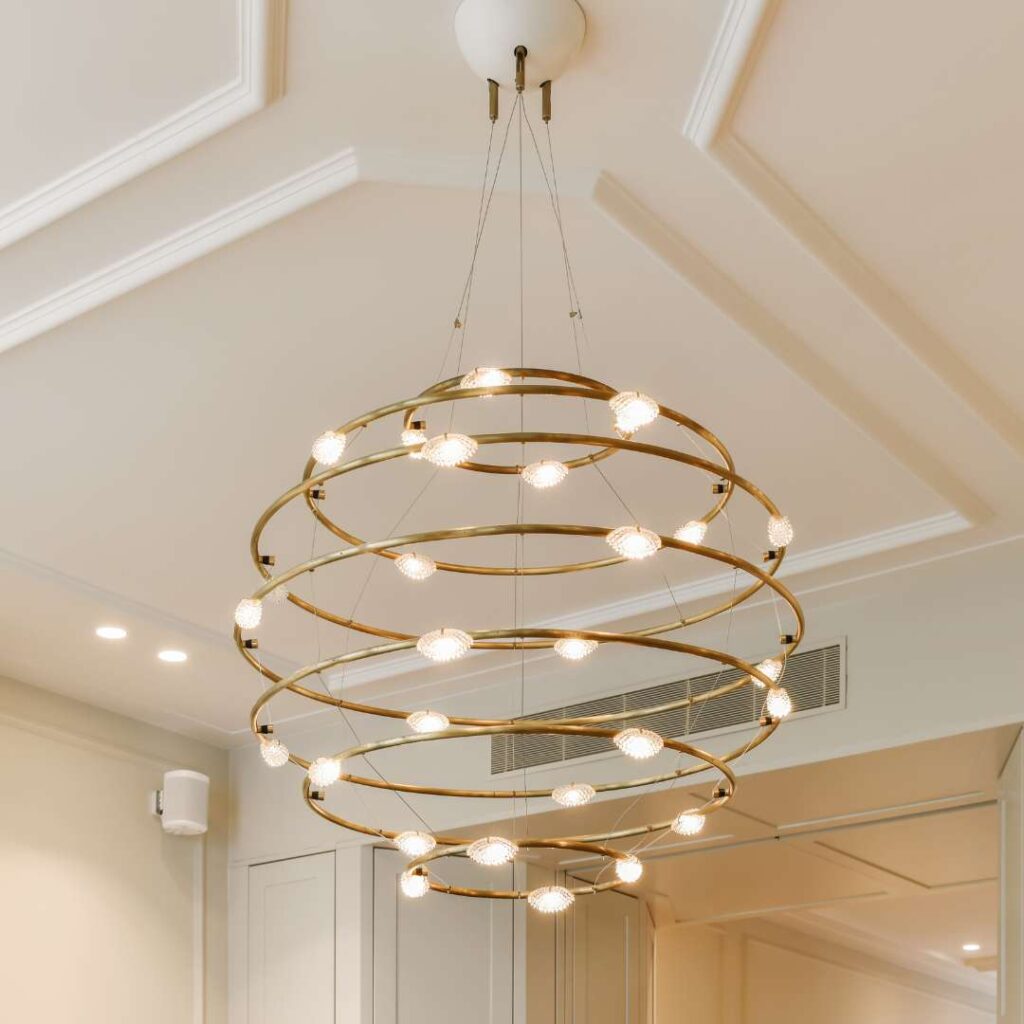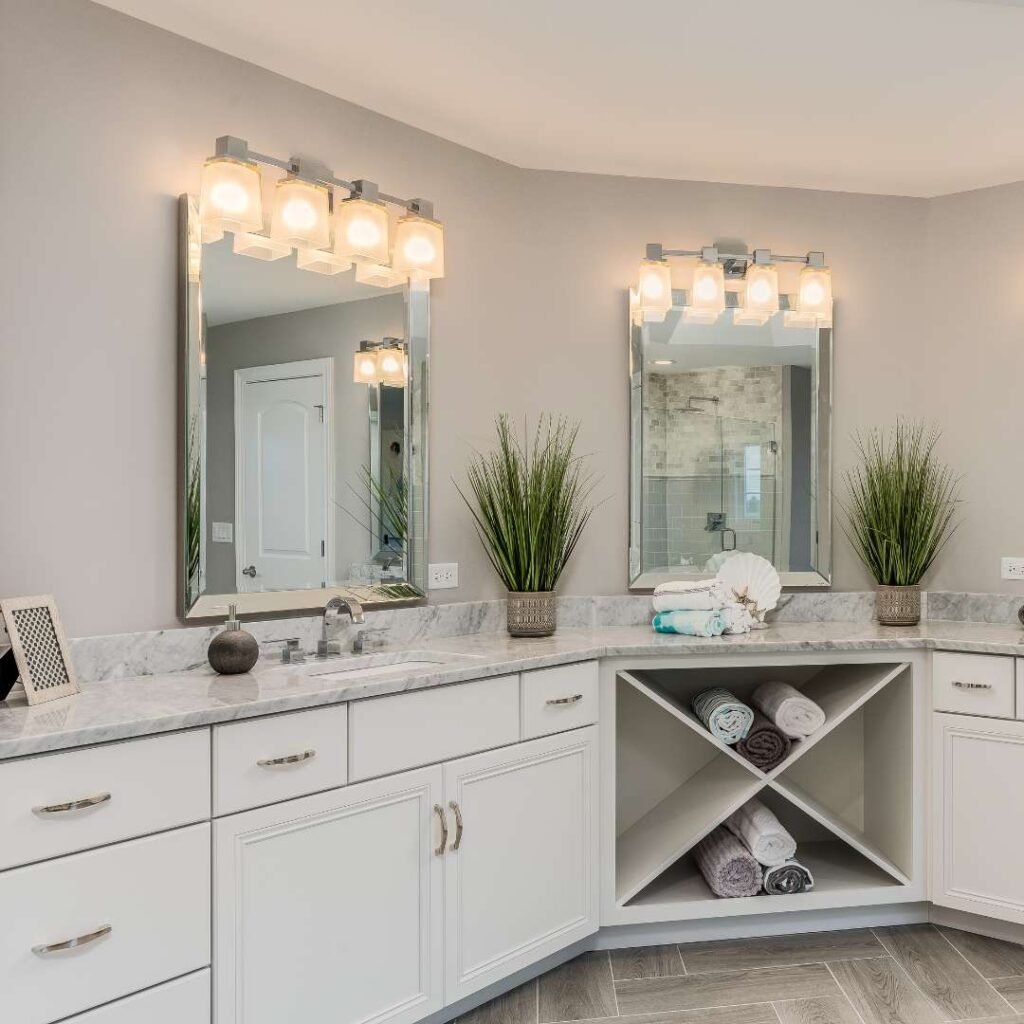Choosing the right light fixtures for your space is crucial in creating a well-designed and functional environment. The right lighting can enhance the overall ambiance, highlight architectural features, and provide adequate illumination for daily activities. Light fixtures not only serve as a practical solution for lighting up a room, but they also add style and personality to your space. By understanding the importance of how to choose light fixtures correctly, you can create a well-lit and visually appealing space that suits your needs.
What You Need To Know: How To Choose Light Fixtures
Step 1: Understand The Different Types Of Light Fixtures
Before beginning the process of how to choose light fixtures, it is crucial to have a comprehensive understanding of the various types available in the market. By familiarizing yourself with these different options, you will be better equipped to make an informed decision that suits your specific needs and preferences. Let’s delve into the world of light fixtures and explore the diverse range of choices at your disposal.
Ceiling-Mounted Fixtures
Ceiling-mounted fixtures, such as chandeliers, flush mounts, recessed lighting, and even ceiling fans with lighting, are undoubtedly the most commonly encountered types of light fixtures. These fixtures are designed to provide general illumination throughout a space, ensuring that every corner is adequately lit. Chandeliers, with their elegant and often ornate designs, are particularly popular in formal settings, adding a touch of sophistication to any room. On the other hand, flush mount lights and recessed lighting offer a more streamlined and minimalist aesthetic, making them suitable as ceiling lights for both traditional and contemporary interiors.

Pendant Lights
If you are looking to infuse your space with a stylish focal point, pendant lights are an excellent choice. These suspended fixtures hang from the ceiling, creating a captivating visual element that draws attention and adds a touch of elegance to any room. Pendant lights come in a wide array of designs, ranging from sleek and modern to vintage and rustic. With their versatility and ability to create a warm and inviting ambiance, pendant lights have become a go-to option for many homeowners and interior designers alike.

Wall Sconces
Wall sconces are a versatile lighting option that can be used for both task and ambient light. These fixtures are mounted on walls and provide an indirect source of light, casting a soft and diffused light that creates a cozy and inviting atmosphere. Wall sconces are often used in hallways, staircases, and bedrooms, where they serve as functional lighting and decorative elements. They can even work as vanity lights for bathrooms. With their ability to add a touch of elegance and sophistication to any space, wall sconces have become a popular choice among homeowners seeking to elevate their interior design.

Track Lighting
For those who require flexibility in directing light to specific areas, track lighting fixtures are an ideal solution. This type of lighting system consists of a track that holds multiple light fixtures, allowing you to adjust and position them according to your needs. Track lighting is commonly used in kitchens, art galleries, and retail spaces, where the ability to highlight specific objects or areas is essential. With its versatility and adaptability, track lighting offers a practical and stylish lighting solution for various settings.

Portable Options
In addition to fixed lighting fixtures, there are also portable options available, such as floor lamps and table lamps. These versatile lighting solutions offer the convenience of mobility, allowing you to move them around to suit your changing needs and preferences. Floor lamps are particularly useful for providing additional illumination in areas where overhead lighting may be insufficient, while table lamps serve as decorative accents and task lighting sources. With their ability to add a touch of personality and functionality to any space, portable light fixtures are a popular choice for those seeking versatility in their lighting arrangements.

Step 2: Assess The Lighting Needs Of Your Space
Assessing the lighting needs of your space is a crucial step in selecting the appropriate light fixtures. It is important to consider the activities that occur in the room and the level of lighting necessary for each. For instance, a kitchen table or counter might require bright, task-oriented lighting for food preparation, while a bedroom could benefit from softer, ambient lighting for relaxation. It is also important to take into account the natural light available in the room and how it will interact with the artificial lighting. Additionally, any specific requirements, such as the need for dimmable lights or fixtures that can be controlled remotely, should be considered. By evaluating the lighting needs of your space, you can determine the type and intensity of light fixtures that are needed.
Step 3: Consider The Style And Aesthetics Of Your Space
Light fixtures serve a dual purpose: functionality and style. They not only provide illumination but also contribute to the overall aesthetics of a space. Whether they act as focal points, enhance architectural features, or seamlessly blend with the existing decor, light fixtures play a crucial role in creating the desired ambiance. When choosing light fixtures, it is important to consider the style and theme of the space. For a modern and minimalistic design scheme, sleek and simple fixtures are recommended. Conversely, for a more traditional or vintage look, ornate and decorative fixtures may be a better fit. Additionally, it is essential to pay attention to the finishes and materials used in the space and select light fixtures that coordinate with them. By carefully considering the style and aesthetics of the space, one can ensure that the chosen light fixtures enhance the overall design.

Step 4: Determine The Appropriate Size And Scale Of Light Fixtures
Choosing light fixtures that are appropriately sized and scaled to your space is essential for achieving a balanced and harmonious look. It’s important to consider the dimensions of your room and the ceiling height when determining the right size of light fixtures. As a general rule, the diameter or width of the fixture should be about one-third to one-half the width of the surface it is illuminating. For example, if you have a dining room table that is 60 inches wide, a chandelier with a diameter of 20 to 30 inches would be suitable. By carefully selecting the size and scale of your light fixtures, you can create a visually pleasing and well-proportioned space.
Step 5: Explore Different Lighting Techniques And Effects
Lighting techniques and effects have a significant impact on the mood and ambiance of a space. By exploring various types of lighting techniques, you can achieve different effects and emphasize specific areas or objects. For instance, accent lighting can be employed to draw attention to artwork or architectural features, while ambient lighting provides overall illumination. Task lighting is ideal for activities like reading or cooking. It’s also important to consider the color temperature of the light bulbs used in your fixtures, as it can influence the overall atmosphere of the space. Warm white light creates a cozy and intimate ambiance, while cool white light is more invigorating and suitable for task-oriented areas. Dimmer switches provide another option to adjust the lighting in a room, allowing for quick changes in the room’s ambiance. By experimenting with different lighting techniques and effects, you can create a dynamic and visually captivating space.

Factors To Consider When Choosing Light Bulbs For Your Fixtures
Selecting the right light bulb style for your fixtures is just as important as choosing the fixtures themselves. There are a few key factors to keep in mind when making your bulb selection:
Wattage
One of the most important factors to consider is the wattage of the bulb. The wattage directly determines the brightness of the light emitted by the bulb. Therefore, it is essential to think about the level of illumination you desire in your space. Whether you prefer a soft and subtle glow or a bright and vibrant ambiance, the wattage of the bulb plays a significant role in achieving the desired light output.
Color Temperature
Another crucial aspect to consider is the color temperature of the bulb. The color temperature refers to the warmth or coolness of the light emitted. Warmer temperatures create a cozy and inviting atmosphere, perfect for creating a relaxing and comfortable environment. On the other hand, cooler temperatures provide a more vibrant and energizing feel, ideal for spaces where productivity and focus are essential.
Energy Efficiency
Last but not least, it is important not to overlook the aspect of energy efficiency when choosing light bulbs. Opting for LED or CFL bulbs can significantly reduce energy consumption and lower your electricity bills. These types of bulbs are designed to be more environmentally friendly and have a longer lifespan compared to traditional incandescent bulbs. By making a conscious choice to prioritize energy efficiency, you not only contribute to a greener planet but also save money in the long run.
How To Shop For Light Fixtures – Online vs. In-Store
When it comes to shopping for light fixtures, there are two options to consider: shopping online or visiting a physical store. Each option has its own advantages and considerations that should be taken into account. Shopping online provides convenience and a wide variety of options to choose from. It allows you to compare prices and read customer reviews, which can be helpful in making an informed decision. However, one drawback is that it can be challenging to visualize how the fixtures will look in your space and assess their quality. On the other hand, shopping in-store allows you to see and touch the fixtures, giving you a better sense of their size, materials, and overall appearance. Additionally, you can seek advice from knowledgeable staff and get a better understanding of the various options available. Ultimately, the decision of whether to shop online or in-store for your light fixtures depends on your personal preferences and priorities.
Tips For Installation And Maintenance Of Light Fixtures
After selecting the perfect light fixtures for your space, it is crucial to ensure their longevity and functionality through proper installation and maintenance. If you are not comfortable with electrical work, it is recommended to hire a licensed electrician to guarantee correct and safe installation of the fixtures. When installing your light fixtures, it is important to follow the manufacturer’s instructions and any local electrical codes.
To keep your fixtures looking their best and functioning optimally, regular maintenance is necessary. This includes cleaning the fixtures and replacing light bulbs as needed. Additionally, it is advisable to take note of any warranties or guarantees that come with your fixtures, as they can provide peace of mind and protection against defects or damage. By following these tips for installation and maintenance, you can enjoy your light fixtures for years to come.

Conclusion
Choosing the right light fixtures for your space is a process that involves careful consideration of various factors. By understanding the importance of choosing the right light fixtures, familiarizing yourself with the different type of fixtures available, assessing the types of lighting needs for your space, and considering the style and aesthetics, you can create a well-lit and visually appealing environment. Determining the appropriate size and scale of light fixtures, exploring different lighting techniques and effects, and choosing the right light bulbs are also crucial steps in the lighting process. Whether you choose to shop online or in-store, make sure to consider the installation and maintenance requirements of your chosen fixtures. By following this step-by-step guide, you can illuminate your space with light fixtures that perfectly suit your needs and enhance the overall ambiance.

